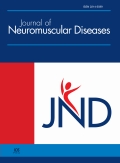|
Authors
Guerra-Rebollo, Marta ; Stampa, María ; Stampa, María ; Lázaro, Miguel Ángel ; Lázaro, Miguel Ángel ; Cascante, Anna ; Cascante, Anna ; Fornaguera, Cristina ; Fornaguera, Cristina ; Borrós, Salvador ; Borrós, Salvador
|
Abstract
Background: Duchenne Muscular Dystrophy (DMD) is one of the most common muscular dystrophies, caused by mutated forms of the dystrophin gene. Currently, the only treatment available is symptoms management. Novel approximations are trying to treat these patients with gene therapy, namely, using viral vectors. However, these vectors can be recognized by the immune system decreasing their therapeutic activity and making impossible a multidose treatment due to the induction of the humoral immunity following the first dose. Objective: Our objective is to demonstrate the feasibility of using a hybrid vector to avoid immune clearance, based on the electrostatic coating of adeno-associated virus (AAVs) vectors with our proprietary polymers. Methods: We coated model adeno-associated virus vectors by electrostatic interaction of our cationic poly (beta aminoester) polymers with the viral anionic capsid and characterized biophysical properties. Once the nanoformulations were designed, we studied their in vivo biodistribution by bioluminescence analysis and we finally studied the capacity of the polymers as potential coatings to avoid antibody neutralization. Results: We tested two polymer combinations and we demonstrated the need for poly(ethylene glycol) addition to avoid vector aggregation after coating. In vivo biodistribution studies demonstrated that viral particles are located in the liver (short times) and also in muscles (long times), the target organ. However, we did not achieve complete antibody neutralization shielding using this electrostatic coating. Conclusions: The null hypothesis stands: although it is feasible to coat viral particles by electrostatic interaction with a proprietary polymer, this strategy is not appropriate for AAVs due to their small size, so other alternatives are required as a novel treatment for DMD patients.
|

WoS
Scopus
Altmetrics
 
|
|
Journal
Journal of Neuromuscular Diseases, September 2021, v.8, n.5, p.815-825
|
